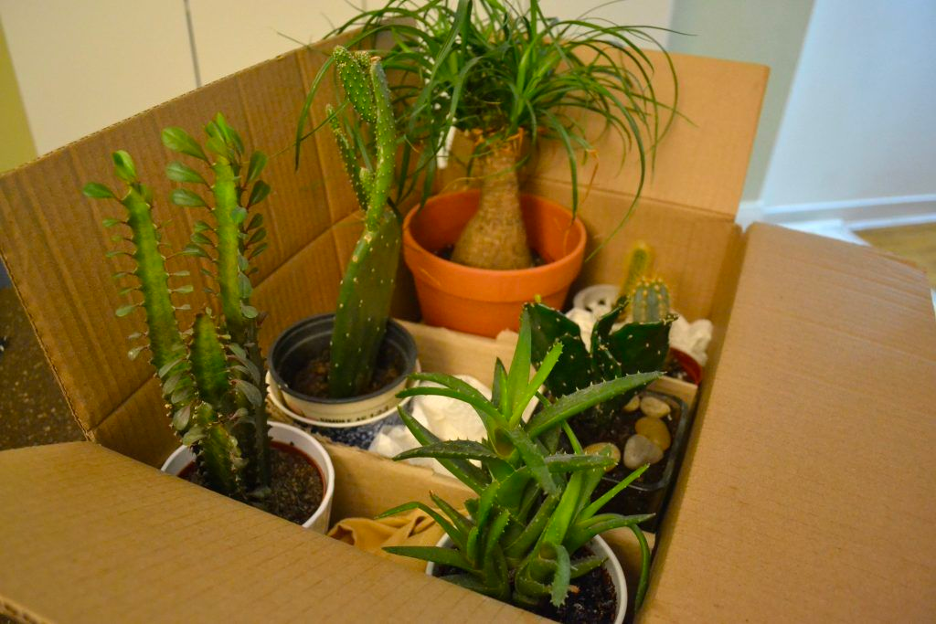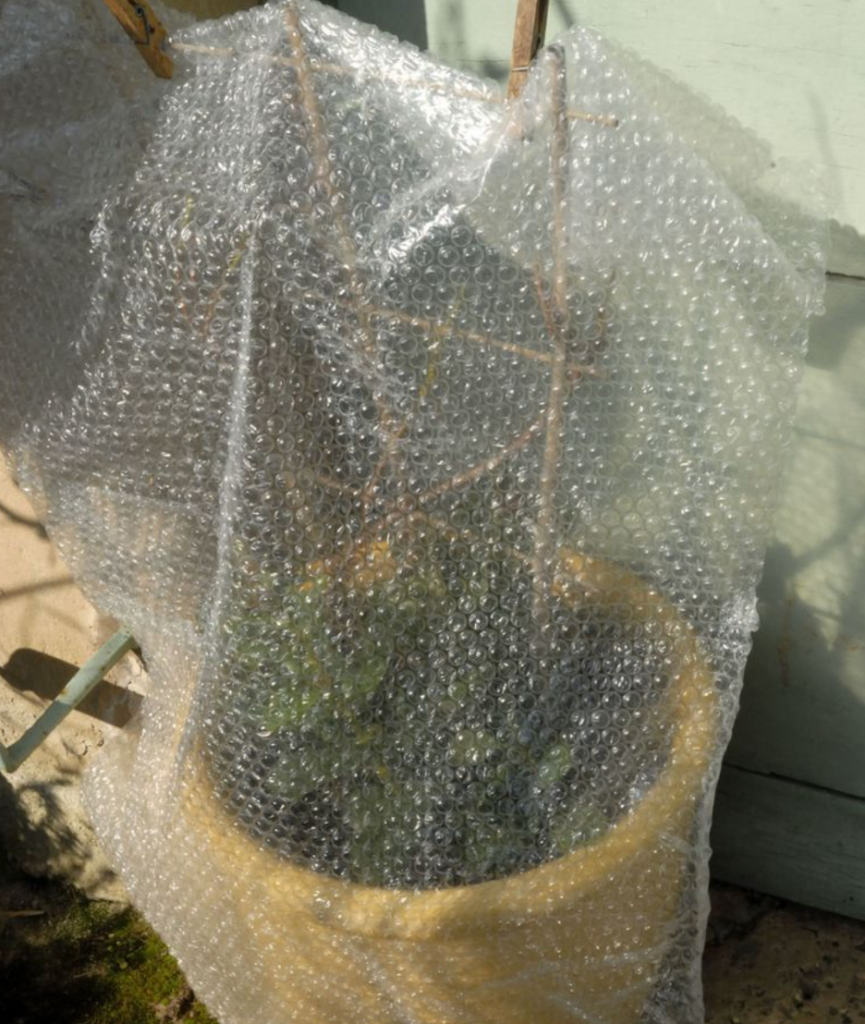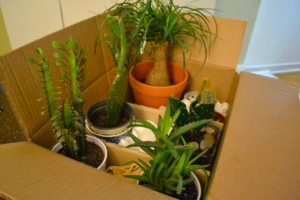Transplanting yourself to a new home is tough enough, but what about your favorite garden or houseplants? They need more care than your good china. Here are a few tips to make sure your plants make it to their new home safely.
Location
If you’re moving from one area of the country to another, say from Southern Vermont to the Southwest, make sure the garden plants you take will survive in the new climate. No need to dig up your New England asters in Brattleboro to move to Phoenix, where they will die.
Moving from one end of a state to the other can also be challenging – even for native plants. There could be a big temperature swing and a different USDA Plant Hardiness Zone. Be selective in whatever you take with you.
Garden Plants
Decide which plants you want to take before listing your home. If the season doesn’t allow for digging and repotting the plants, indicate in your listing which plants you are excluding and their locations.
If the season allows for digging, remove plants from the landscape, making sure to dig well below the roots. Place them in pots or plastic bags. Store the plants in a shady area and water as needed until ready for the move.
Houseplants
Take note of the windows, patio doors, or other light sources in your new home. Are there more trees or shrubs around the new home that block outdoor light? Will there be more light? Select plants that will do best in the new setting.
Take a look at the houseplants to make sure they don’t have insects or disease. Give each plant a good shower to make sure.
Be selective. The most difficult plants to move are large ones, which are susceptible to mangled leaves and broken stems.
Is the Plant Legal?
Certain plants are legal to grow in some states but not in others. Think cannabis. Other plants, such as purple loosestrife or ornamental pear, may be banned because they are invasive.
If moving out of state, check with your new state’s list of invasive or banned plants. Also, check with the municipality or homeowners associations that may have a say in what you can plant in your yard.
Watering
In winter, you want to hold off on watering garden plants and houseplants for a few weeks before the move. Plants with dry soil don’t run the risk of wet roots that can freeze. If moving in summer, all plants will need to be well watered.
Packing
Whether moving a large plant from the garden or a large houseplant, wrap it in bubble wrap, a sheet, or blanket, starting at the bottom of the pot. Staple or tape the wrap snugly around the plant.
Place smaller plants in boxes, crates, or other containers. Avoid moving them individually. Better to have them loaded in easy-to-move containers. If there are gaps where pots could move around, stick crinkled newspaper, a rag, or bubble wrap to cushion them and take up the space.
Moving
Plants need certain temperatures to survive. That means protecting them from intense cold or heat. You’ll need to pack them in your car or van, where heat and cold can be controlled. Protect them in cold weather by tenting blankets or sheets over them.
One common mistake people make when moving? Putting plants in the trunk or back of the moving van. You may have to move the plants into your motel room overnight, and back out the next day. Even stopping for a meal may cause the plants to freeze or cook. These considerations may help you decide how many plants to take with you.
Pro Tip: For summer travel, pack ice packs in a cooler. Use them to protect plants in your car from excessive heat in case there’s an accident or road construction.
Unpacking Plants
The plants should be the last thing you pack and the first things you unpack. In summer, place them in a protected, shady location and remove any protective material. Give them a good drink of water and a light spray from a garden hose.
In winter, move your houseplants immediately into a heated area, remove their protective covering, and water them. Snip off any damaged leaves or stems.
It may be a few weeks before the soil is warm enough for you to plant your garden plants. In the interim, protect them from freezing, by storing them in a garage or basement. Monitor their water needs until ready to transplant to the new landscape.
Be Patient
Keep in mind: It takes all of us a little time to get used to our new home and surroundings. Plants are no different. Give them time to acclimate to the new climate and soil conditions and they’ll bounce back – probably before you’re finished unpacking!
Mykala Thomas learned from her grandmother to respect and nurture the land. Now, she and her children work on community garden projects in neighborhoods with few grocery stores. She loves to write about all things that grow.







